Cool Jobs: Motion by the numbers
Scientists create and study motion with the help of geometry

Car accidents are an all-too-common occurrence. To analyze what happened — and hopefully move toward design improvements that limit future accidents — safety engineers rely on geometry. Theirs is just one of many important and interesting careers that rely on this field of math.
Daisy-Daisy /iStockphoto
Without warning, a car-sized object slams into a stopped car. It hits the front on the driver’s side. The oncoming car is traveling at 90 kilometers (56 miles) per hour.
Thor, a high-tech crash dummy, sits in the driver’s seat of the stopped car. The force that caused the wreck flings Thor around like a rag doll.
Greg Shaw and his team watch the grisly smashup. Shaw notes that the crash lasts around 120 milliseconds. He describes this amount of time as a bit longer than an eye blink. A biomechanical engineer, Shaw deliberately crashes cars for a living. He works at the Center for Applied Biomechanics at the University of Virginia in Charlottesville.
Shaw’s cool job uses geometry, a field of math that involves shapes — especially points, lines, planes, curves and surfaces. Many other exciting jobs also rely on geometry. Here we meet three people who use this math to explore how people and objects move.
The science of crashing cars
Shaw’s work combines thrilling action with careful research. He tries to reduce deaths and injuries by making cars safer for their occupants. He collects data on accidents after they’re over. He also collects data during the crashes that he simulates in his lab. Since 2008, Shaw has worked with the Crash Injury Research Engineering Network (CIREN). It’s a program of the National Highway Traffic Safety Administration. CIREN is made up of medical and engineering teams that are located around the United States. Shaw is on the University of Virginia and Inova Fairfax Hospital team, a CIREN group in Virginia.
Working alongside a CIREN crash investigator, Shaw probes accidents serious enough to send people to Inova Fairfax Hospital in Falls Church, Va.
Story continues below slideshow.


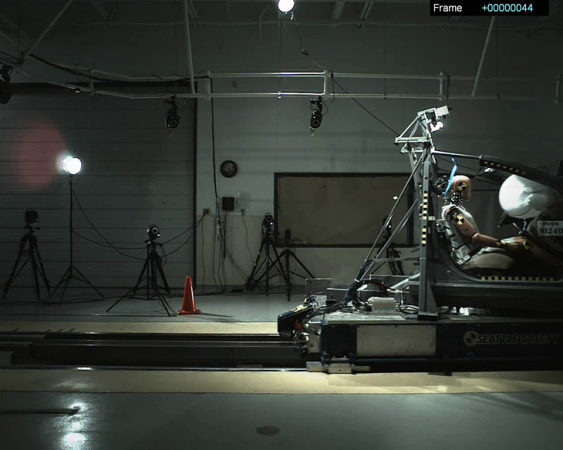
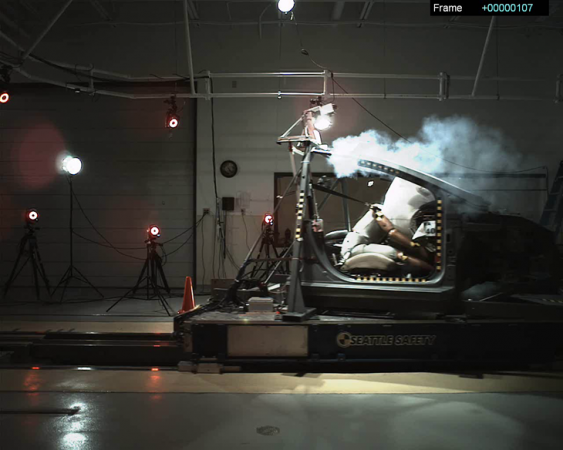
The team examines the medical charts of patients who participate in their investigations. The search is on for clues. These might include photographs or descriptions of the person’s injuries. Such evidence can tell a lot about how someone got hurt.
The researchers also examine the wrecked cars. This allows them to measure how much the smash-up had deformed each vehicle.
The duo also looks for clues inside the car. They search for any sign that an occupant made contact with parts of the car during the crash. For example, sometimes a person’s head will hit one of the car’s A-pillars. These two components support a car by keeping its windshield in place. Heads often are injured when they slam into an A-pillar. Scuff marks on the surface of an A-pillar and scrapes on someone’s forehead also can point to that structural pillar as the source of that injury, Shaw notes.
Newer cars have devices called event data recorders (EDRs), notes Shaw. These are like an airplane’s “black box,” or flight data recorders. EDRs record data immediately before and during car crashes, including a car’s speed right before the impact. They also record whether the driver had braked.
After analyzing all of these data, the team brainstorms how a car might be modified in a way to increase occupant safety.
In the lab, Shaw and his team focus on collisions known as “frontal oblique impacts.” These are frontal impacts that hit closer to one side than the other. For example, if something smashes into the body of a car near the headlight on the driver’s side, striking at a 30 degree angle, this is a frontal oblique crash.
A degree is a unit of measurement for angles. Each degree equals one 360th of the circumference of a circle. So for a frontal oblique impact with a 30 degree angle, there is a space between the incoming object and the car that is equal to one-twelfth the circumference of a circle (360° ÷ 30° = 12).
Shaw found that the crashes he studies follow a pattern. Typically, one vehicle is stopped at a traffic light. A second car approaches from the opposite direction. The driver of that second car loses control of the vehicle and swerves into the stopped car’s lane. Then it slams into the front end of the stopped car. It does so at an angle that is about 15 degrees from a head-on collision.
Such crashes are common. And they often result in occupants becoming seriously injured or killed, Shaw notes. That’s why he chose to study them.
Growing up, Shaw didn’t picture himself having a career involving geometry. He was first interested in the design aspects of engineering, like the skills that he uses when he brainstorms ways to modify cars so people will be safer. He now finds geometry “a useful and necessary tool” for his work.
The geometry of video games
Geometry also fuels another cool field of work: creating video games.
Ryan Bown works at the University of Utah in Salt Lake City. “I [have] always loved art and video games,” he says. About eight years ago, he decided to fuse the two loves. Bown does 3-D modeling, texture art and design for video games.
Before immersing himself in the artistic side of video games, Bown spent 10 years creating art for galleries and museums. “I created abstract work based on fractal geometry,” he notes. Fractals are complex geometric figures. These figures have the same shape at all levels of size, from the microscopic to the gigantic.
Story continues below image.
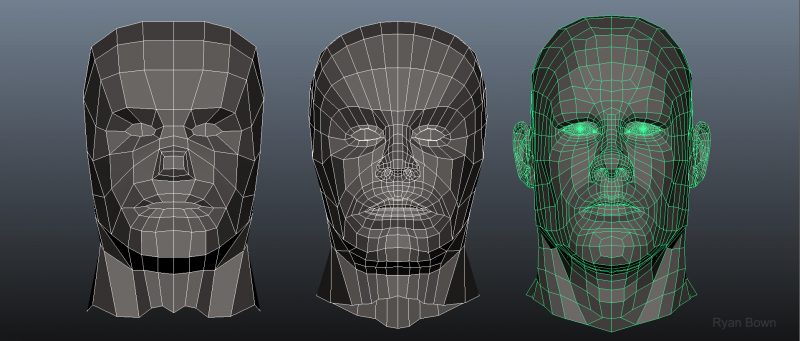
Bown has worked on six video games in the last five years. They have included a horror game called Erie. He worked as part of the Erie team while he was in graduate school at the University of Utah.
“My role on Erie was lead artist with some design [work],” he says. “I was responsible for the look and feel of the game.” Bown created most of the artwork for the environment of the game, he notes. By “environment” he means the virtual place where events in the game happen.
This job would not be possible without math, he notes: “I use geometry every day.” Geometry helps him break down complex characters, objects and props “into simple, primitive shapes such as cubes, cylinders and spheres,” he notes.
In game design, geometry is used to determine how characters can behave, Bown notes. For example, designers use navigational meshes. These are geometric boundaries. They are used to define where objects and non-player controlled characters (NPCs) can go within a game. NPCs can be friendly characters that a player encounters during game play. They also can include enemies, which are characters that prevent players from reaching their goals, Bown explains.
Navigational meshes typically restrict objects or NPCs to a volume of the virtual space. This volume is defined by the game’s designer. Shapes such as cubes and cylinders have volume because they have three dimensions: length, width and height. A designer might use a navigational mesh to restrict the movement of an enemy (such as a dragon) to one section of a cave, for example.
Lately, Bown has been working on what he calls “serious” games. These are ones “intended to teach or train the player through game play,” he explains.
Story continues below image.
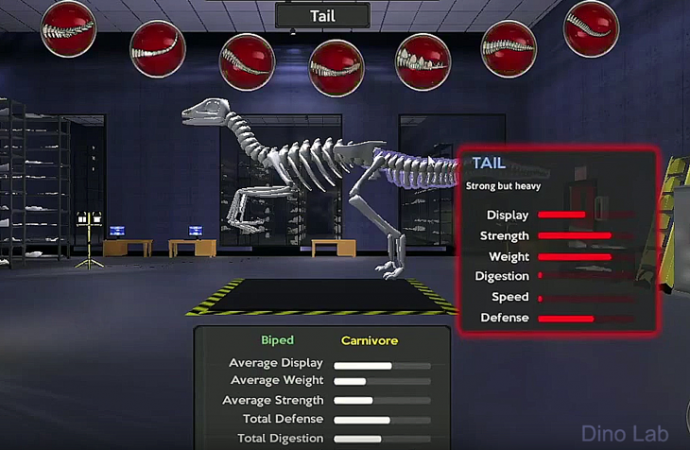
For instance, Bown and his students recently created a serious game called Dino Lab. They created the free game as a joint project with the Natural History Museum of Utah. Dino Lab uses dinosaur bones to teach students critical thinking.
Teachers and students can register for the game on the Research Quests website. The research quest project uses online tools — including 3D models of dinosaur bones and short videos with museum scientists. The goal is to help a viewer identify different types of dinosaurs and determine what likely led to their deaths.
“As a kid, I loved learning math,” Bown notes. “I found it challenging, but it was kind of magical.” He points out that people use math every day without thinking about it. It may be something as simple as estimating how long it takes to get to school. And it may be something that seems to require skills that are more physical than mathematical, such as making the perfect pass in football by calculating the angle at which the ball must travel.
Racing to the finish line with the help of geometry
Jessica Deneweth Zendler directs the Michigan Performance Research Laboratory at the University of Michigan in Ann Arbor. This biomedical engineer is a kinesiologist (Keh-NEES-ee-OL-oh-jist), or scientist who studies how people move. Kinesiologists can even help people improve how their bodies function by showing them ways to move that put less stress on their muscles, bones and joints. Using correct motions also can enhance someone’s physical fitness. This includes their performance in sports, such as running. It might even help them recover from injuries or lessen their risk of injury.
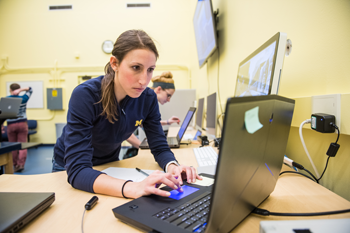
In February 2016, Deneweth Zendler’s lab began offering four types of running assessments. A so-called novice version is designed for people who are new to running and want help on how to get off to a successful start. Performance assessments help people who have some particular goal for their running. Postpartum assessments cater to women who recently had a baby and want to start running or to return to the sport. Injury assessments analyze what might underlie the injuries or chronic pain that some runners suffer.
That chronic pain often afflicts the knees and feet. And where it shows up can be quite specific. For example, one knee may hurt a lot and the other remain pain-free. Some runners have chronic pain but don’t know the specific cause of it. Others have chronic pain due to injuries, such as stress fractures. These fractures, found in such places as the shin bones and feet, are a type of injury that many runners experience, Deneweth Zendler notes.
She conducts all four types of assessments. Here’s what an injury assessment looks like. Researchers in her lab start by giving each runner a full physical exam. Tests will measure the runner’s strength and range of motion. They also examine the athlete’s joints and posture. Next, the team places special sensors on the runner’s body. These allow her team to assess the runner’s biomechanics. By that, she means such things as the angles that a runner’s joints make while that person is running on a treadmill. Typically, they focus on joints in the hip, knees and ankles.
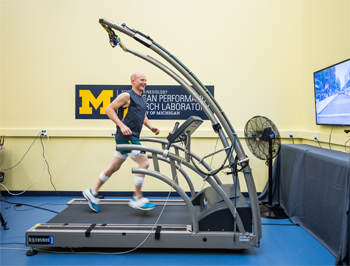
By analyzing data from the exam and treadmill tests, the team diagnoses what is behind a runner’s injury, Deneweth Zendler says. Then they offer corrective advice. This is aimed at teaching runners how to change the angles their joints create as they run. The research team may even provide runners with exercises to help them use or strengthen particular muscles. Runners can follow this advice on their own or along with help from a physical therapist.
Several weeks after an assessment, Deneweth Zendler’s team contacts runners for an update on their progress. She says they often report that they “feel like they are running faster or some of their injuries are getting better.”
Since childhood, Deneweth Zendler has enjoyed math, problem-solving and physics. She says she has “always been very interested in how the body moves.” Much of that interest stems from her experiences as a lifelong athlete. She grew up playing soccer. She continued to play the sport throughout college. Now she is a recreational athlete, focusing on endurance running and competitive cycling.
Not surprisingly, Deneweth Zendler often uses her “ability to think mathematically” when working in the lab. After all, she observes, geometry and other forms of math are “hidden everywhere in life.”
Geometry empowers people to discover new things about the world around them. This is true whether they are scientists like Shaw and Deneweth Zendler, artists and designers like Bown or high school students encountering the subject for the first time. With its mix of visually appealing shapes (often showcased in art) and roots in logic and critical thinking, geometry has much to offer people in all walks of life.
This is one in a series on careers in science, technology, engineering and mathematics made possible with generous support from Arconic Foundation.







